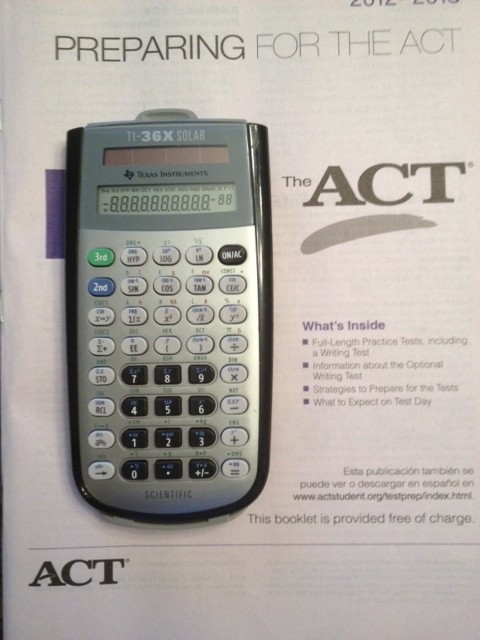
Preparing for the ACT can be a daunting task, especially when it comes to understanding the technicalities involved in the examination process. One of the most pressing questions test-takers often pose is: “Which calculators are permitted on the ACT?” The use of a calculator on this standardized test can significantly enhance efficiency, allowing students to focus on complex problem-solving rather than getting bogged down by manual calculations. However, the ACT has specific regulations regarding which types of calculators can be utilized. This comprehensive guide not only delineates the approved calculators but also elucidates the underlying rationale behind these stipulations.
Firstly, it is imperative to understand the overarching guidelines. The ACT allows calculators on the mathematics section of the test, but not on the English, reading, or science sections. This selective allowance is designed to evaluate students’ mathematical reasoning capabilities while still providing them the tools to facilitate their computational skills. The mathematics section is one wherein a calculator can ameliorate the processing of numerical data, thereby allowing for a greater focus on solving intricate mathematical problems.
There are primarily two categories under which calculators may fall: permitted calculators and prohibited calculators. To qualify as a permitted calculator, the device must adhere to certain specifications outlined by the ACT. Below is a thorough examination of these categories:
Permitted Calculators
1. **Graphing Calculators**: These are favored for their multifunctionality, allowing users to plot graphs, solve simultaneous equations, and perform complex statistical analyses. Examples of preferred models include the TI-83 series and the TI-84 series from Texas Instruments, as well as the Casio fx-9750GII. Graphing calculators are particularly useful in both algebra and geometry sections, where visual representation of mathematical concepts can significantly aid comprehension.
2. **Scientific Calculators**: These devices, while less sophisticated than graphing calculators, offer essential functions suitable for solving equations and performing calculations. Models such as the Casio fx-300 series and the TI-30X are commonly accepted. Scientific calculators enable students to execute functions such as exponents and trigonometric calculations, which are crucial in navigating certain mathematical theories presented in the ACT.
3. **Basic Calculators**: Standard four-function calculators are also permissible; however, candidates are encouraged to utilize them with caution. Devices that provide basic addition, subtraction, multiplication, and division can sufficiently perform simple calculations but may not cater to the more complex mathematical requirements of the test. Such calculators may serve low-risk scenarios where the equations remain straightforward.
Prohibited Calculators
A stringent exclusion policy surrounds certain calculator types, in part due to concerns about potential misconduct and the desire to maintain a level playing field. The following devices are explicitly prohibited:
1. **Calculators with QWERTY Keyboards**: Any calculator that replicates a computer keyboard’s layout falls under the category of disallowed devices. This restriction emanates from concerns about the possibility of using such calculators to store notes or perform extensive functions that transcend basic computation. Additionally, such devices may distract users or lead to misuse in an exam setting.
2. **Graphing Calculators with Computer Algebra System (CAS)**: These are powerful tools that can perform symbolic algebraic manipulations, such as factoring and expanding expressions. The ACT prohibits models like the TI-Nspire CAS because they can potentially provide candidates an unfair advantage by offering solutions that go beyond mere computation.
3. **Calculators with Bluetooth or Wireless Connectivity**: Devices that can connect to external networks are strictly barred from use during the ACT. The rationale is grounded in concerns about the potential for cheating and communication during the exam, thus compromising the test’s integrity.
Smartphones and Other Electronic Devices
In addition to calculators, it is critical to note that all other electronic devices—including smartphones, tablets, and smartwatches—are not permitted in the testing room. The ACT emphasizes a distraction-free testing environment. Candidates are directed to leave these devices in a designated area outside the examination room. Furthermore, the presence of these devices could inadvertently facilitate dishonest behavior, prompting the need for stringent regulations.
Making Informed Decisions
To maximize preparedness, students are encouraged to choose their calculator wisely. Familiarity with the device is paramount. It is advisable to engage in practice sessions using the chosen calculator before test day to ensure fluency in its operation. Understanding its functions, shortcuts, and capabilities can enable students to navigate the mathematical section more skillfully and confidently.
In conclusion, test-takers must approach the ACT with a clear understanding of the tools at their disposal. By familiarizing themselves with the list of approved calculators, candidates not only enhance their own readiness but also reinforce their confidence on test day. Ultimately, the goal is to ensure that each individual can illustrate their mathematical prowess without being hindered by the limitations of their chosen technology.
As students prepare to meet the formidable challenges presented by the ACT, knowing which calculators are allowed empowers them to not only optimize their performance but also engage in a more profound exploration of mathematical concepts, nurturing a deep-seated fascination for learning that transcends the boundaries of standardized testing.
